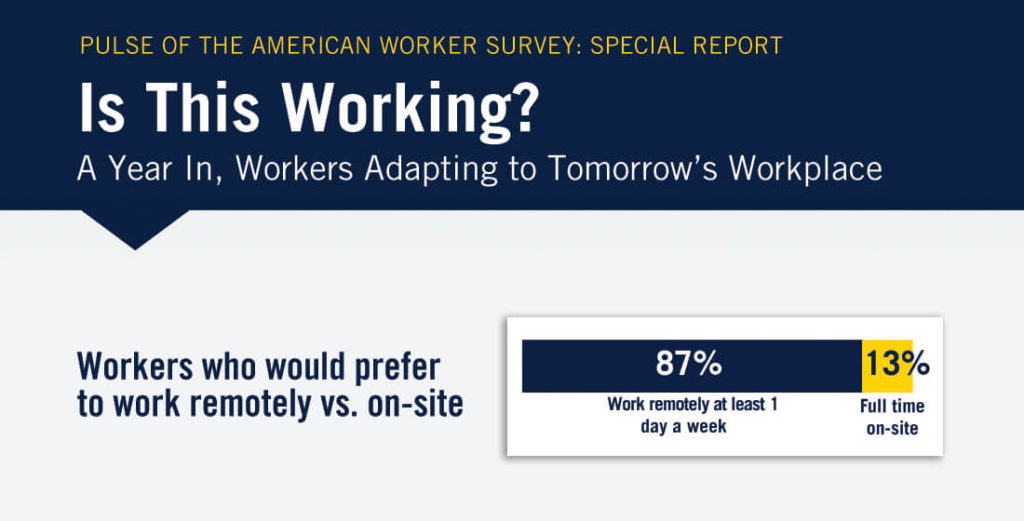Have you heard about the latest term that’s arisen in the post-pandemic world? “The Great Resignation” has been getting attention in the media as the cause of the next round of disruption to hit businesses around the globe.
Microsoft conducted a survey of more than 30,000 workers across 31 countries that showed 41% of them were considering changing their profession or resigning this year. While data from the U.S. Bureau of Labor Statistics shows quit rates have increased slightly across July, August and September this year compared to 2020, the concern is more about the number of workers who are actively considering it.
| Sep 2020 | May 2021 | Jun 2021 | Jul 2021 | Aug 2021 | Sep 2021 |
| 2.3% | 2.5% | 2.7% | 2.7% | 2.9% | 3.0% |
Source: US Bureau of Labor Statistics, “The Great Resignation: Quit levels and rates by industry and region, seasonally adjusted”
One of the metrics that gets drilled in every CEO in the SaaS industry is churn rates. This is a measure of the number of customers that leave your product or service per month and per year. The optimal churn rate for B2B SaaS enterprises is below 0.8% per month, or less than 10% per annum.
Likewise with employees, a quit rate of 2.3% or 3.0% doesn’t sound like a lot each month, but the cumulative effects can seriously disrupt your business, especially if you’re not expecting it. To illustrate, a 2.3% quit rate per month can, if it happens consistently through the year, add up to 27.6% turnover; 3% a month adds to 36%. Losing more than a third of your workforce over the course of 12 months is a serious threat to any business.
Microsoft’s study gave a 41% resignation rate — which means a quit rate of 3.4% per month. The US isn’t far off those figures right now. It will be interesting to see the U.S. Bureau of Labor’s figures from October and November when they’re released later next month.
Quit rates by industry
So far, we’ve been talking about overall quit rates across every industry, but what are the figures like from sector to sector? In the table below, we look at the highest industry quit rates and the change from September 2020 to September 2021.
Industries with the highest quit rates
| Industry | Sep 2020 | Sep 2021 | Change |
| Retail trade | 3.1% | 4.4% | +41.9% |
| Leisure and hospitality | 4.5% | 6.4% | +42.2% |
| Accommodation and food services | 4.7% | 6.6% | +40.4% |
| Arts, entertainment, and recreation | 2.7% | 5.7% | +111.11% |
| Educational services | 0.8% | 1.7% | +112.5% |
While retail, hospitality, and the arts have had the highest level of quit rates in September 2021, the rate in change from the same period last year is dramatic. A surprising result is that although the Educational Services industry quit rate was only 1.7% in September 2021, the rate in change was 112.5%. Even at a comparatively low monthly quit rate, the effects of more than twice the number of people than usual resigning can be extreme.
Industries with minimal increases in quit rates
| Industry | Sep 2020 | Sep 2021 | Change % |
| Professional and business services | 3.3% | 3.3% | 0% |
| Trade, transportation, and utilities | 2.4% | 2.7% | 12.5% |
| Mining and logging | 2.6% | 3.4% | +30.7 |
| Construction | 2.0% | 2.5% | +25% |
| Government | 0.9% | 1.0% | +11.11% |
As the above table shows, some industries’ quit rates have changed very little across the same time period; the professional and business services industry showed no change at all between September 2020 and September 2021. Is it because people in that industry have been able to transition to remote work more easily than others?
Why are people resigning?
It’s an excellent question with a boiling pot full of possible answers. Here are some of the big ones.
- Many people put their plans for a career transition on hold during the pandemic. Now borders are opening again, they’re bringing their plans out of mothballs and putting them back in operation.
- The pandemic has let more people discover the remote work experience. Prudent Financial’s Pulse of the American Worker survey found that 68% of employees believe a hybrid workplace is ideal, and an impressive 87% of them prefer to work remotely for at least one day per week.
- Goldman Sachs’ research suggests that 1.5 million people opted to take early retirement in August 2021, adding to normal retirement figures. Remember, the “silver tsunami” is still taking place, as baby boomers leave the workforce. Retirement is not technically included within resignation data, but these figures still represent an accelerated “brain drain” as veteran employees take their expertise with them.
- Other research shows women have exited the labor force at twice the rate of men as school and child care closures have forced them to stay home.

Source: Prudent Financial, Pulse of the American Worker Survey
The Great Resignation = The Great Onboarding Opportunity
While the prospect of up to 41% of people considering changing their job or career in the coming year may seem worrying, it does come with a silver lining.
As these people look for their next opportunity, employers can take the chance to lift their recruitment game at each stage of the process.
Coming out of the pandemic, workers are asking themselves a lot of questions they never really did before. Things like…
- Is my boss kind, or a jerk?
- Do my co-workers care about me?
- What does my organization stand for?
- Am I being paid fairly? Am I respected?
- Do I like the culture of this organization?
- Is flexible or hybrid work available?
- Am I fulfilled in my role?
As these people migrate to new organizations, their new employers have a chance to make a good first impression through their onboarding processes. And while there’ll be a war for talent, employers can also use this environment to hone their employee experience as they narrow in on the skill and competency gaps they need to fill in their business.
Get your business ready for “The Great Resignation”, and “The Great Onboarding” by implementing processes in these areas:
- Auditing your organizational culture, employee experience, and leadership practices.
- Conduct exit interviews when workers resign.
- Define roles and responsibilities, required skills and competency levels.
- Carry out testing to make sure candidates will be a good cultural fit, and have the right skills.
- Develop and deliver training programs and processes to upskill great potential workers.
- Conduct scheduled team and one-on-one meetings to make sure your staff are fully engaged and properly supported.
- Create checklists of everything new employees will need to do their work and give it to them as part of their onboarding.
- Carry out annual competency assessments to understand what areas your staff need additional training in to enhance and build skillsets.
- Test company equipment and resources at regular intervals to make sure they’re still fit for purpose and that staff can still complete their work effectively.
If you’d like any help with these or other processes that can help your business turn “The Great Resignation” challenge to your advantage, just reach out to your Way We Do support team at support@waywedo.com.





